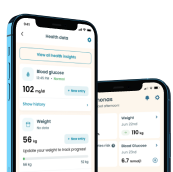What Is a Diabetes Prevention Program, and Who’s Eligible?

Diabetes is one of the incredibly common conditions that many adults above 45 years are vulnerable to. However, the condition isn’t just limited to people of this age group. Any age category can suffer serious complications from diabetes if they lead unhealthy lifestyles that raise their blood sugar.
In the United States alone, over 20 million people have been diagnosed with diabetes, while a significant number of those with the condition are yet to be diagnosed. This leaves them extremely vulnerable to the complications of high blood sugar. This high number of diabetic patients simply points to the reality that many people lead and make unhealthy choices when it comes to their blood sugar.
In response, diabetes health institutions strongly recommend that patients make deliberate health choices that encourage and position their blood sugar range at a safe level. Patients are usually encouraged to eat healthier meals, exercise regularly, and stick to their health-given management tips.
Having a deliberate management plan as a diabetic can help control diabetes. However, most people barely have a plan for their condition, while those who do barely follow the steps and guidelines.
Due to the above barriers that realistically disrupt diabetics’ goal to improve their condition, top national health institutions have implemented different programs to help people prevent the disease entirely. The objective of these campaigns is based on the “Prevention Is Better Than Cure” mantra to help people at risk of developing type 2 diabetes gain control of their blood sugar by following a structured lifestyle change program.
This article considers these Diabetes Development Programs (DDPs), the type of technical assistance they offer, and their ultimate goals for patients.
What Are Diabetes Prevention Programs?
Diabetes Prevention Programs (DDPs) have become extremely popular in the United States and are considered among the most innovative mechanisms set up to tackle diabetes growth in the country. A Diabetes Prevention Program is designed to help people at risk of having diabetes and those who experience high blood sugar spikes for long periods adopt steps to control their glucose level.
While different institutions may have distinct guidelines on how their program runs, the general objective is to help people control their blood sugar so they don’t develop diabetes. For emphasis, the keyword and focus of these programs is ‘prevention.’ So, people who already have diabetes aren’t usually considered candidates for DPPs.
Some of the candidates that could qualify for these diabetes programs include people that have experienced gestational diabetes. Gestational diabetes is a temporary diabetic condition that mothers experience during pregnancy or childbirth. It’s usually temporary, and blood sugar will go back to its normal level a few weeks or months after delivery.
However, the risk of developing diabetes in people that have experienced it in the past is considerably high. As such, most DPPs consider women with a history of gestational diabetes as high-risk candidates.
Private and government-owned national institutions usually sponsor Diabetes Prevention Programs. Typically, the programs are carried out by top government bodies that include the different national associations of health bodies. These bodies usually get private firms involved in the campaign, enabling a wider reach to more interested candidates.
Studies and research on DPP have shown that the different campaigns spread out have been a success. People with a high risk of the disease have gotten treatments and assigned lifestyle coaches to help them achieve better health. Some programs feature some of the best chronic disease directors and health professionals who understand the disease and offer expert management tips to ensure that candidates get effective treatments.
Summarily, DPPs have come to stay, and their preliminary recognition as firms that help achieve diabetes disease control makes them stand out.
Different Diabetes Prevention Programs Currently Available

There are currently different organizations that are heavily invested in DPPs currently, and they have helped thousands of patients achieve healthy blood sugar levels and a healthier lifestyle. These organizations are usually known for their different works in health and include the very best professionals.
The Center for Disease Control and Prevention (CDC) is one of the most reputable organizations known to help people prevent diabetes. The organization includes some of the best diabetes care specialists with proven effectiveness and efficiency to help patients recover steadily and safely.
The CDC isn’t the only organization that sponsors a Diabetes Development Program. Other organizations help prediabetes patients make more effective choices concerning their health and ensure that their blood levels are at the safe range.
The major work of DPPs is that they help a patient adopt a healthy lifestyle that positively reduces their blood sugar level and body mass index (BMI) while improving their confidence.
That said, let’s examine some of the major Diabetes Development Programs in detail:
CDC National Diabetes Prevention Program
The Center for Disease Control and Prevention (CDC) is one of the leading bodies in the United States, spearheading a diabetes prevention campaign to help patients live better. The good thing is that the program is open to every person, and they can participate online. All they need to do is visit the CDC website or the program’s dedicated page to get the CDC-approved curriculum on how to start.
According to the CDC, about 96 million adults in the United States have diabetes. What’s more, the body believes the number will only increase over the years due to the continuous demand for high-sugar foods and the ease of developing unhealthy habits.



The CDC program is known as the National Diabetes Prevention Program but is abbreviated as National DPP. It admits interested applicants, enabling them to adopt good healthy lifestyles to prevent diabetes. Additionally, people with prediabetes can join the program and take a blood test to determine their blood range and susceptibility to finally developing diabetes.
Each test helps health specialists know how to group patients and subject each group to specific guidelines and medications. This helps reduce their blood sugar safely and effectively and minimizes the risk of developing diabetes.
The structured lifestyle guidelines for people who register with the CDC have proven significantly effective. Remarkably, it’s helped thousands of patients balance their blood sugar levels and eliminate their risk of being diabetic.
The CDC works with public and private organizations to reach more prediabetes patients to help them stop habits that put them at risk of developing diabetes.
YMCA’s Diabetes Prevention Program
The Young Men’s Christian Association (YMCA) is among the global organizations known to encourage a healthy lifestyle through Christian biblical principles. The organization also operates a DPP in the United States and aims to help people with high blood sugar adopt a healthy life that helps control their blood sugar.
It’s clear that the organization’s DPP is only one of the lifestyle change programs offered by the YMCA. However, in the US, the DPP is the most recognized work performed by the firm.
Many candidates have been able to achieve better health under the YMCA DPP. As such, it’s a great campaign that people looking to prevent their condition from developing into diabetes can register with to achieve better blood sugar health.
National Institute of Diabetes and Digestive and Kidney Diseases Diabetes Prevention Program (NIDDK DPP)
The NIDDK DPP is a more dedicated research-focused campaign that not only helps candidates with how they can reduce the risk of developing type 2 diabetes but also offers consistent research about their program. The organization has its recommended drugs, guidelines for eating healthy, and other important factors that can significantly manage abnormal blood sugar.
The institution’s DPP research on several candidates with high blood sugar risk shows that its campaign is effective in the short and long term. The research performed on the firm involved short-term results, 10-year results, and 15-year results. They all showed that the institution program could help people with diabetes development risk consistently keep their health in the safe range in the long term.
Private Diabetes Prevention Programs
As stated in the above sections, private firms collaborate with public and government-controlled institutions to campaign against diabetes development. These firms usually get their curriculum from top firms and organizations. As such, patients can trust their specialized care in the fight against diabetes development.
There are several top privatized institutions that you can connect with and follow their diabetes prevention program. The Wisconsin Institute for Healthy Aging is among the major institutions that sponsor diabetes prevention programs for people with a risk of developing the condition. The firm also has an excellent curriculum in line with government-owned institutions and can be trusted to give candidates the best results.
Exercise and Healthy Eating: The Major Features of a Diabetes Prevention Program

Diabetes Prevention Programs come with many benefits from simply following easy steps and guidelines. The good thing about these programs is that the specialists try as much as possible to reach out to the patients in the most personal ways. This approach ensures they don’t adopt a counterproductive lifestyle and destructive habits that could push their blood sugar higher and into the danger zone.
The programs, however, have similar management guidelines that diabetes health specialists offer. Among the different steps these programs provide candidates, exercise and healthy eating are the two major foundations most of them are built around.
While there’s no doubt that all campaigns have specific guidelines that their candidates follow, there’s a serious emphasis on physical activity and healthier eating. Both factors are the major determinants of blood sugar levels. Healthy eating, especially, can determine if a potential diabetes patient can recover from their dangerous blood sugar range.
The major source of glucose is carbohydrates, which double as the most consumed form of food. This explains why many people easily slip into a high blood sugar condition. Also, irregular eating patterns play a role in high blood sugar and unhealthy body weight gain.
Most health DPPs encourage patients to eat healthily and have a strict eating routine that all candidates are expected to follow. This further reinforces that eating diabetes-friendly meals is crucial to a possible recovery from dangerous blood sugar ranges. Fortunately, this revelation means that many people who aren’t disposed to register for the program can also help themselves by adopting healthy eating patterns.
Furthermore, there are many diabetes-friendly meal apps that people at risk of developing diabetes can use to handle their meal choices more efficiently. These apps ensure they eat foods that aren’t high in sugar and allow them to keep a better food routine. That way, they help fight against developing diabetes as their recommendations are in line with those of DPPs.
Conclusion
Diabetes Prevention Programs (DPPs) are deliberate, dedicated professional programs that help patients with diabetes limit how much their condition restricts their lives. These programs—sponsored by major health associations and diabetes-specialized private companies—have helped patients achieve landmarks that were considered impossible before. The good thing about these programs is that they’re modern and are consistently revolutionizing diabetes treatment so that patients can live as normally as possible.
As was discussed in this guide, healthy eating plays a major role in the success of Diabetes Prevention Programs, considering that carbs and glucose—the major cause of blood sugar spikes—are among the most consumed foods. Generally, the need for diabetes patients to watch what and how they eat is one of the major concerns for diabetes management. Fortunately, many online resources and meal apps—alongside Diabetes Prevention Programs—can help patients eat right.
Klinio app is a highly recommended diabetes meal app that helps patients eat well and right. Namely, it provides patients with the best foods out of a thousand resources, including the most popular restaurant and homemade meals. These foods are healthy, don’t increase blood sugar spikes in patients, and aren’t bland, implying you not only eat healthily but also enjoy your meals.
Take a quiz and get your diabetes-management plan today!









